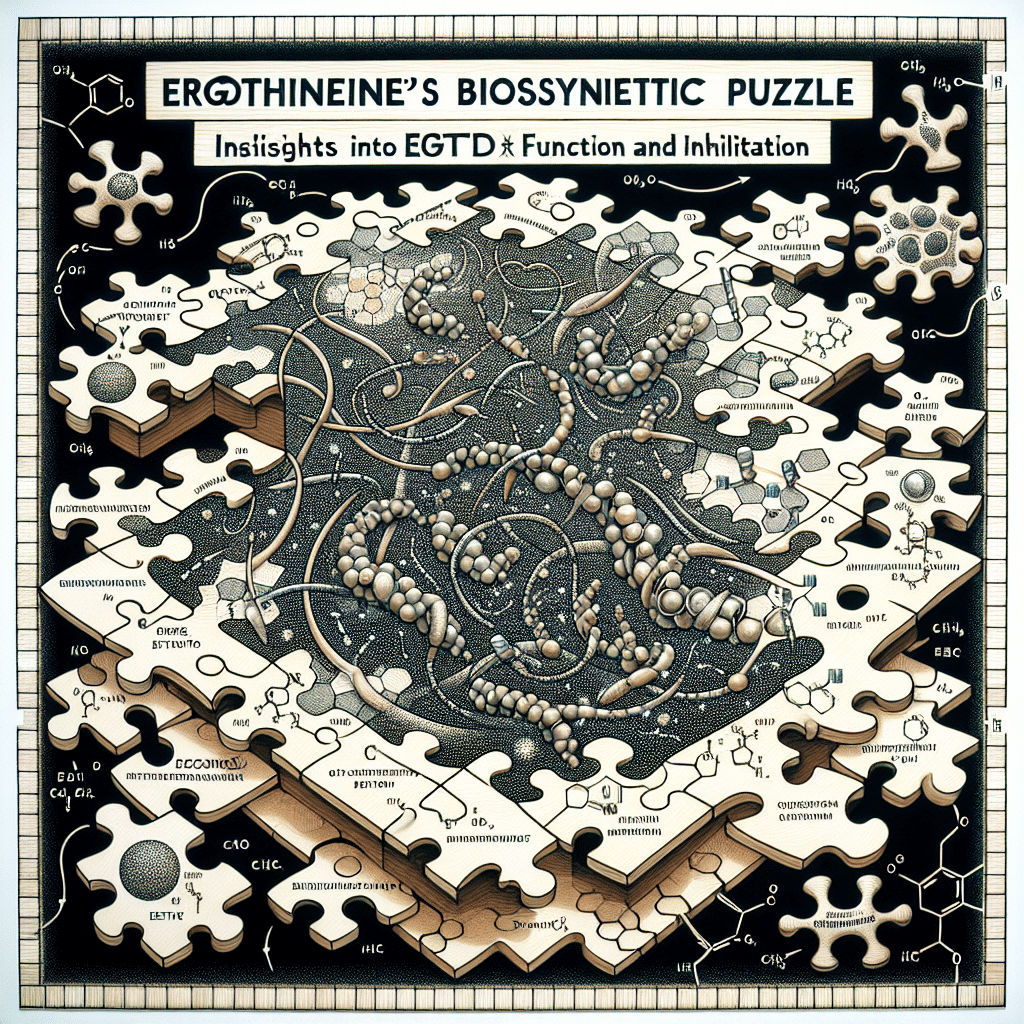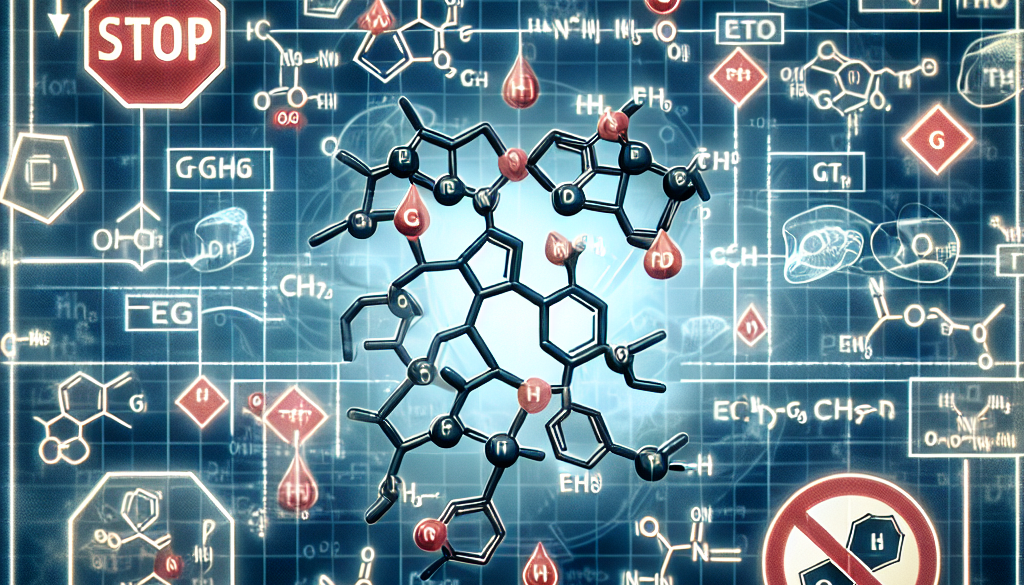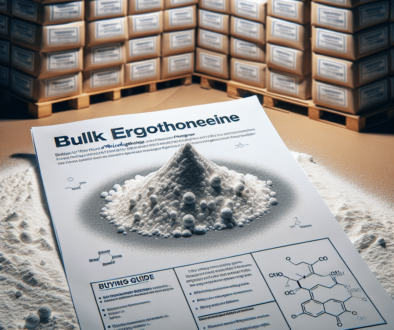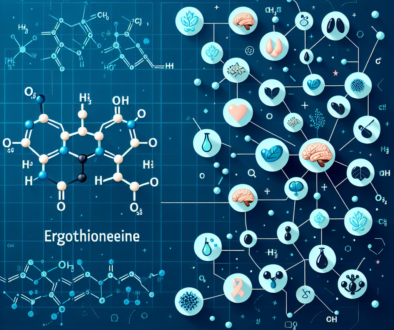Ergothioneine’s Biosynthetic Puzzle: Insights into EgtD Function and Inhibition
-
Table of Contents
- Ergothioneine Biosynthesis: Deciphering EgtD’s Role and Potential Inhibition
- Understanding Ergothioneine and Its Importance
- The Biosynthetic Pathway of Ergothioneine
- Zooming in on EgtD: The Enigmatic Enzyme
- Insights into EgtD Function
- Strategies for EgtD Inhibition
- Case Studies and Applications
- Challenges and Future Directions
- Conclusion: Key Takeaways on EgtD’s Role in Ergothioneine Biosynthesis
- Discover ETprotein’s Premium Protein Products
Ergothioneine Biosynthesis: Deciphering EgtD’s Role and Potential Inhibition

Ergothioneine (ET) is a naturally occurring amino acid and is considered a potent antioxidant, with a unique role in protecting cells from oxidative damage. Its biosynthesis has intrigued scientists for years, particularly the function of the enzyme EgtD. Understanding EgtD’s role in ergothioneine biosynthesis and how it can be inhibited is crucial for both scientific advancement and potential therapeutic applications. This article delves into the complexities of ergothioneine’s biosynthetic pathway, with a focus on the insights into EgtD function and inhibition.
Understanding Ergothioneine and Its Importance
Ergothioneine is a thiol compound found in various organisms, including bacteria, fungi, and animals. It is known for its antioxidant properties, which help protect cells from oxidative stress, a factor in many diseases. Ergothioneine is also thought to play a role in anti-inflammatory processes and cellular energy regulation.
The Biosynthetic Pathway of Ergothioneine
The biosynthesis of ergothioneine is a complex process that involves several enzymes. The pathway begins with the precursor histidine and proceeds through a series of enzymatic reactions to produce ergothioneine. The key enzymes involved in this pathway are EgtA, EgtB, EgtC, and EgtD, each responsible for a specific step in the synthesis.
- EgtA: Converts histidine to hercynine.
- EgtB: Adds a sulfur group to hercynine to form hercynylcysteine sulfoxide.
- EgtC: Oxidizes hercynylcysteine sulfoxide to form the intermediate compound.
- EgtD: Completes the biosynthesis by converting the intermediate to ergothioneine.
Zooming in on EgtD: The Enigmatic Enzyme
EgtD is the final enzyme in the ergothioneine biosynthetic pathway and is responsible for the critical last step. Despite its importance, the exact mechanism of EgtD’s action has been somewhat elusive to researchers. Recent studies have begun to shed light on its function, revealing that EgtD catalyzes the formation of the thione group, a key feature of ergothioneine’s structure.
Insights into EgtD Function
Recent research has provided valuable insights into the function of EgtD. Advanced techniques such as X-ray crystallography have allowed scientists to visualize the structure of EgtD, leading to a better understanding of how it binds to substrates and catalyzes the reaction. Studies have shown that EgtD has a unique active site that is specifically tailored to recognize and transform the intermediate compound into ergothioneine.
Strategies for EgtD Inhibition
Inhibiting the function of EgtD could have significant implications for controlling the levels of ergothioneine in organisms, which may be beneficial in certain medical conditions. Researchers have been exploring various strategies for inhibiting EgtD, including:
- Small molecule inhibitors that bind to the active site of EgtD, preventing it from catalyzing the reaction.
- Genetic approaches, such as RNA interference, to reduce the expression of the EgtD gene.
- Allosteric inhibitors that bind to other parts of the enzyme, inducing a conformational change that reduces its activity.
Case Studies and Applications
Several case studies have highlighted the potential applications of EgtD inhibition. For example, in certain pathogenic fungi, ergothioneine is thought to contribute to their virulence. By inhibiting EgtD, it may be possible to reduce the pathogenicity of these fungi, offering a new avenue for antifungal therapy. Additionally, in cancer research, modulating ergothioneine levels through EgtD inhibition could impact tumor growth and survival.
Challenges and Future Directions
While the potential benefits of EgtD inhibition are clear, there are also challenges. One major challenge is the development of specific inhibitors that do not affect other enzymes in the cell. Additionally, more research is needed to understand the full range of biological effects that ergothioneine and its biosynthesis have on organisms.
Future research directions include:
- Exploring the role of ergothioneine in different diseases and conditions.
- Developing more potent and selective EgtD inhibitors.
- Investigating the long-term effects of EgtD inhibition in vivo.
Conclusion: Key Takeaways on EgtD’s Role in Ergothioneine Biosynthesis
In conclusion, the enzyme EgtD plays a crucial role in the biosynthesis of ergothioneine, a compound with significant antioxidant properties. Insights into the function and potential inhibition of EgtD open up new possibilities for therapeutic interventions and a deeper understanding of cellular protection mechanisms. As research progresses, the puzzle of ergothioneine’s biosynthesis continues to unravel, promising exciting developments in the field of biochemistry and medicine.
Discover ETprotein’s Premium Protein Products
If you’re interested in high-quality protein products, consider ETprotein’s offerings. Their range includes organic rice protein, pea protein, and various seed proteins, all characterized by a neutral taste and non-GMO, allergen-free attributes. They also supply L-(+)-Ergothioneine in various grades suitable for pharmaceutical, food, cosmetic, and research applications. With purity levels over 98% and 99%, ETprotein caters to a diverse range of industries, ensuring that your protein needs are met with the highest standards.
About ETprotein:
ETprotein, a reputable protein and L-(+)-Ergothioneine (EGT) Chinese factory manufacturer and supplier, is renowned for producing, stocking, exporting, and delivering the highest quality organic bulk vegan proteins and L-(+)-Ergothioneine. They include Organic rice protein, clear rice protein, pea protein, clear pea protein, watermelon seed protein, pumpkin seed protein, sunflower seed protein, mung bean protein, peanut protein, and L-(+)-Ergothioneine EGT Pharmaceutical grade, L-(+)-Ergothioneine EGT food grade, L-(+)-Ergothioneine EGT cosmetic grade, L-(+)-Ergothioneine EGT reference grade and L-(+)-Ergothioneine EGT standard. Their offerings, characterized by a neutral taste, non-GMO, allergen-free attributes, with L-(+)-Ergothioneine purity over 98%, 99%, cater to a diverse range of industries. They serve nutraceutical, pharmaceutical, cosmeceutical, veterinary, as well as food and beverage finished product distributors, traders, and manufacturers across Europe, USA, Canada, Australia, Thailand, Japan, Korea, Brazil, and Chile, among others.
ETprotein specialization includes exporting and delivering tailor-made protein powder and finished nutritional supplements. Their extensive product range covers sectors like Food and Beverage, Sports Nutrition, Weight Management, Dietary Supplements, Health and Wellness Products, and Infant Formula, ensuring comprehensive solutions to meet all your protein needs.
As a trusted company by leading global food and beverage brands and Fortune 500 companies, ETprotein reinforces China’s reputation in the global arena. For more information or to sample their products, please contact them and email sales(at)ETprotein.com today.














